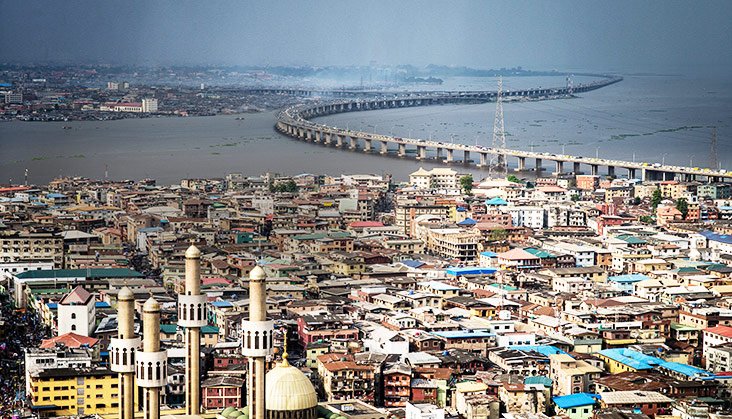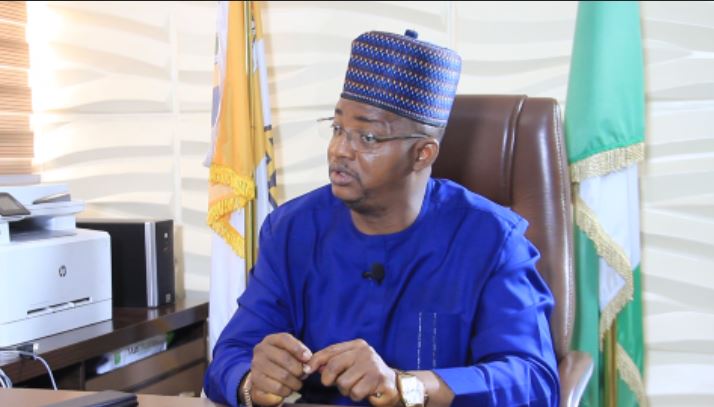By Ralph Tathagata
A megacity is a city with a population of 10 million people or more, while a metacity is a city with 20 million or more people. Oftentimes, megacities are agglomerations, created when two or more towns and cities grow so large that they join together.
At the start of the 20th century, only London and New York could be considered megacities. At that time, just 2% of the world’s population lived in cities. Thereafter, most of the world’s megacities were found in Asia, and were also often found in coastal locations. Currently, megacities are now growing faster in the developing world, especially Africa compared to the developed countries.
As part of its pre-colonial history, Lagos, a name given to the settlement by the Portuguese, was originally inhabited by the Awori subgroup of the Yoruba people in the 15th century. They later moved to an island now called Iddo and then to the larger Lagos Island. Because the area was dominated by the then expansive Oyo Empire, they called it Eko, from the late 16th century to the mid-19th century, which still remains its native name to date.
Prior to colonial Nigeria, colonial Lagos was declared a colony on 5 March 1862. The remainder of modern-day Nigeria was seized in 1887, and when the Colony and Protectorate of Nigeria was established in 1914, Lagos became its capital, continuing as such after the country’s independence from Britain in 1960. Along with migrants from all over Nigeria and other West African nations were the returnee ex-slaves known as Creoles, who came from Freetown, Sierra Leone, Brazil and the West Indies to Lagos.
Having gone through a series of urban, geographical, social and political metamorphoses, Lagos as it is known today as a megacity brand remains one of the fastest-growing cities in the world.
Despite the argument over the exact population of metropolitan Lagos, the true population figure of Lagos area in 2022 is roughly 28 million (up from some 23.5 million in 2018). Lagos may therefore have overtaken Kinshasa as Africa’s most populous city. In other words, Lagos is the largest city in Nigeria and the most populous in Africa, having surpassed Kinshasa.
Brand positioning as it applies to destinations involves complexities in its conceptualisation and practical features which suggest that the design and implementation of brand positioning strategies are not trivial. However, despite the many complexities involved, band positioning can be operationalised as a contextualisation of the destination considering the external conditions from the socioeconomic, environment and technology development perspectives which then affect the atmosphere.
For Lagos, the question on many experts’ lips is: What are the critical destination brand and marketing challenges facing the mega city of over 20 million people, due to increase twofold by 2050, according to some predictions?
At the continental level, a recent report from the Population Reference Bureau predicted that by 2050, three of the 10 most populous nations globally will be African – with Nigeria at number four. The country’s population, the report said, will rocket to 397 million. To put this figure in context, by the middle century, Nigeria’s population would be larger than Central Africa’s in its entirety. The population boom will impact the whole country, but nowhere will it be more profound than in Lagos.
T.H.E.M.E.S is an acronym for Mr. Babajide Sanwo-Olu, the executive Governor of Lagos State administration’s six strategic development agenda namely, Traffic Management and Transportation Health and Environment Education and Technology Making Lagos a 21st Century Economy Entertainment and Tourism Security and Governance.
The T.H.E.M.E.S agenda is designed to address the multi-modal transportation system deficit and reduce the city’s dependence on fossil fuels as its primary sources of energy, enabling the development of viable industries and local production.
The state in its efforts to be a 21st century mega city economy is strategically leveraging tourism to build its equity as the business hub of the nation’s economy.
To bridge the enormous physical and socio-economic gaps of the city, Mr. Sanwo-Olu’s government has been working on the most critical challenges common to all its inhabitants, including energy, water and transportation.
Safety on the roads is an important metric to the Lagos State government hence the need to deploy penalties for traffic offenses. It is important to know that the least financial penalty to be paid under the traffic law in Lagos State is N20, 000.
Apart from penalties relating to road users behavior while driving, other major reasons they can be penalized include if their cars have expired or fake documents, driving without a Driver’s license, driving of any vehicle by person under 18, driving with fake number plates, and driving with forged vehicle particulars among others.
A smart mega city requires a smart population, and education is one area set to become a potential crunch point in the Lagos mega city project. With less than 15 higher institutions (both public and private), Lagos, as currently constituted, is a far cry from meeting its higher education demands. And gaps between academia and industry would mean that even if there were an increase in higher education supply, graduates would not be well groomed to fit into industries or to create jobs.
The government is therefore investing in educational public-private partnerships that will provide technical and vocational skills to ease the pressure on higher education. Through these improvements the system would not only meet the needs of Lagos, but has the potential to power the entire national and other African economies, positioning Lagos as a future continental market leader.







Comment
No comments found.